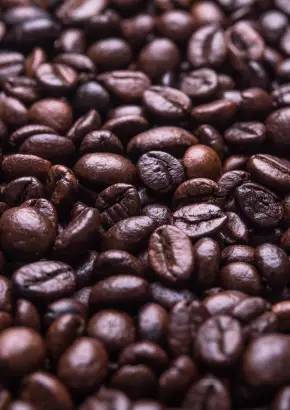30w买包还是交学费?

Aeon网站上六月7日的一篇文章,题目是《炫耀性消费已经结束了,现在都是无形消费》( Conspicuous consumption is over. It’s all about intangibles now )。
作者是南加州大学的公共政策教授伊丽莎白·科瑞德-霍凯特(Elizabeth Currid-Halkett),我们就叫她科瑞德吧。
文章主要是讲述了现在很多人已经脱离了有形消费,而是专注于无形消费,所谓无形消费,更多的比如说教育、健康、人力资本、享受的服务等。
从进入21世纪以来,炫耀性消费在美国已经结束了 —— 因为现在几乎没什么东西值得炫耀。
随着生产力提高,各种以前的“高端”消费品都在向普通人普及。
坐飞机、开 SUV、游轮度假,这些东西年收入七万美元的中等收入者也能负担得起。
再好的电视机、再贵的名牌包,也不过就几千美元。
从绝对生活享受来说,富人和中等收入者差别不大。
背个好包,别人不知道你是真有钱的富人,还是一个喜欢包的中等收入者。
但是,当别人在讨论什么的时候,你能知道别人在讨论什么,并且能够融入进去,那在很多时候,你的谈资就为你开拓了一个新的圈子,也许,这比你背了一个好包,在一个公众场合结实一个新的圈子来的可能性更佳的大。
越来越来多的人,把钱花在了教育上,而不是花在了装饰自己的外表上面,很明显的一点就是,花着一个买包的钱,你去加深了自己的内涵,那比你直接拿着一个包在手里的价值越来越明显。
记得很多年前有一篇文章叫做《我奋斗了18年才和你坐在一起喝咖啡》。




在奋斗了18年之后,“我”终于融入到这个国际化大都市中,与周围的白领没有什么差别。
不过当时花总丢了金箍棒在自己的微博上又捅了上面这位朋友(或者说是这位朋友所代表的一类人)一刀:“真正的杯具是:你们虽然历经千辛万苦坐到了一起,可你手中的杯子是几十块的星记,而她捧的却是动辄上千的爱马仕。 ”
一转眼又过去了好多年,时代也变了。
2 万多一只爱马仕,谁说只有几十万才能买得起?
除了那些贵得要死要活的铂金包,近期拍出 37.7 万美元的天价,大量的奢侈品都开辟了自己的副线,或者说丝巾、腰带、零钱包、彩妆这样总有一件让你能够买得起的产品。再不济,就跟快时尚合作好了,几百块买一件爱马仕,真不是什么难事。
现在悲剧的可能是,你奋斗了 18 年,终于拎得起一只爱马仕(副线也算),人家却不动声色,拎着一个看不出来名堂的包包,可能穿着也是没有logo的衣服,却上着过百万的 EMBA 课程,吃着有机食品,订阅着每年 100 美金的《经济学人》,认同母乳喂养至少一年这样的观点。
Conspicuous consumption is over. It’s all about intangibles now
| 炫耀性消费时代结束,现在是无形消费时代
假设,你在一个聚会上与两位年轻的女士聊天。其中一位拿的包看上去很一般,但是谈吐不俗,引用了上周《经济学人》杂志对英国大选的分析。第二位的包一看就是名牌,但她更关心电视剧《欢乐颂》里的某个人物的命运。
那你能不能判断,这两位女士谁的社会地位更高呢?
在中国可能不太好判断。第一位女士显然更有文化,也许是某个大学的青年教师。可是第二位女士的经济状况可能更好,也许是银行的什么经理。作为读书人,我们更同情第一位女士,但二人地位高低,很难说。
但是,如果是在今天的美国,答案就非常简单了 —— 肯定是第一位女士社会地位高。不仅仅是学识,我们甚至可以断定,她的经济状况也大大超过第二位女士。
这可不是因为美国是个公平社会,有知识的人地位一定高 —— 因果关系正好相反:今天的美国是个非常不平等的社会,知识很贵,是只有社会地位高的人,才有知识。
文章总结说,这样的无形消费有助于为精英工作铺平道路,赋予社会流动性。
文章讲述如下
100 多年后,炫耀性消费依然是资本主义景象的一部分,但是相对比起维勃伦时代,奢侈品更容易获得。
More than 100 years later, conspicuous consumption is still part of the contemporary capitalist landscape, and yet today, luxury goods are significantly more accessible than in Veblen's time.
奢侈品也开始进入寻常百姓家,富豪们买得起的包包和电视,中产阶级一样买得起。开 SUV 、坐飞机、开邮轮也已经日益平民化了,从绝对物质型消费这一层面来看,富豪们跟中产阶级看起来似乎是一样的。
However, the democratisation of consumer goods has made them far less useful as a means of displaying status.In the face of rising social inequality, both the rich and the middle classes own fancy TVs and nice handbags.They both lease SUVs, take airplanes, and go on cruises.On the surface, the ostensible consumer objects favoured by these two groups no longer reside in two completely different universes.
鉴于现在很多人都买得起好车和名牌包包,奢侈品不再是有钱人的特权。所以美国开始盛行另一种新兴阶级:“有抱负的阶级”。他们可能还是会晒游艇,但他们会更倾向于教育和人力资本投资来巩固自己的社会地位。
Yes, oligarchs and the superrich still show off their wealth with yachts and Bentleys and gated mansions. But the dramatic changes in elite spending are driven by a well-to-do, educated elite, or what I call the ‘aspirational class’. This new elite cements its status through prizing knowledge and building cultural capital, not to mention the spending habits that go with it – preferring to spend on services, education and human-capital investments over purely material goods. These new status behaviours are what I call ‘inconspicuous consumption’. None of the consumer choices that the term covers are inherently obvious or ostensibly material but they are, without question, exclusionary.
这些年收入在 7 万美元左右的阶级,他们更多地选择在教育、健康和退休方面的投资,而且要比中等消费者购买包包要多很多钱。(教育支出占前者家庭消费的 6%,后者的1%)
Eschewing an overt materialism, the rich are investing significantly more in education, retirement and health – all of which are immaterial, yet cost many times more than any handbag a middle-income consumer might buy.

而且教育也变得越来越贵。2003-2013 ,十年间的消费支出数据显示,大学学费涨价 80%,妇女服饰成本才上涨6%。有钱人才能够接受得起更优质的教育。
The vast chasm between middle-income and top 1 per cent spending on education in the US is particularly concerning because, unlike material goods, education has become more and more expensive in recent decades. Thus, there is a greater need to devote financial resources to education to be able to afford it at all. According to Consumer Expenditure Survey data from 2003-2013, the price of college tuition increased 80 per cent, while the cost of women’s apparel increased by just 6 per cent over the same period. Middle-class lack of investment in education doesn’t suggest a lack of prioritising as much as it reveals that, for those in the 40th-60th quintiles, education is so cost-prohibitive it’s almost not worth trying to save for.
除了上面的这些,文章还举了几个例子。比如说订阅一年 100 美元的《经济学人》,并不是说中产阶级订阅不起,而是说一种消费观念的选择以及,能够订阅《经济学人》,起码说明你接受过良好教育。它也就成为你的高端社交通行证,在社交场合,你能够谈论《经济学人》,比你背个爱马仕更受人欢迎。
Knowing these seemingly inexpensive social norms is itself a rite of passage into today’s aspirational class. And that rite is far from costless: The Economist subscription might set one back only $100, but the awareness to subscribe and be seen with it tucked in one’s bag is likely the iterative result of spending time in elite social milieus and expensive educational institutions that prize this publication and discuss its contents.
Perhaps most importantly, the new investment in inconspicuous consumption reproduces privilege in a way that previous conspicuous consumption could not. Knowing which New Yorker articles to reference or what small talk to engage in at the local farmers’ market enables and displays the acquisition of cultural capital, thereby providing entry into social networks that, in turn, help to pave the way to elite jobs, key social and professional contacts, and private schools. In short, inconspicuous consumption confers social mobility.
More profoundly, investment in education, healthcare and retirement has a notable impact on consumers’ quality of life, and also on the future life chances of the next generation. Today’s inconspicuous consumption is a far more pernicious form of status spending than the conspicuous consumption of Veblen’s time. Inconspicuous consumption – whether breastfeeding or education – is a means to a better quality of life and improved social mobility for one’s own children, whereas conspicuous consumption is merely an end in itself – simply ostentation. For today’s aspirational class, inconspicuous consumption choices secure and preserve social status, even if they do not necessarily display it.
看完文章,首先想到的是,美国教育是真贵,中国人幸福多了!但话说回到中国,消费阶层也有这样的萌芽。大家不再热衷于炫耀简单的奢侈品,(当然,晒豪宅豪车依然是当前社会刷存在感的一大利器,《王者荣耀》之父姚晓光前几天还斥资 9800 万香港购置房产就说明这一点)不再喜欢一些只有土豪才喜欢的东西(比如那些一看就知道你很有钱的爱马仕腰带,驴牌包包、亮瞎眼的江诗丹顿大手表),更喜欢低调奢华有内涵的单品。
尽管中国的义务教育已经让我国教育成本降低了很大一笔,与美国相似的是,真正有钱阶级的象征其实是能够为优质教育支付的人。你看中国那些天价的学位房。


